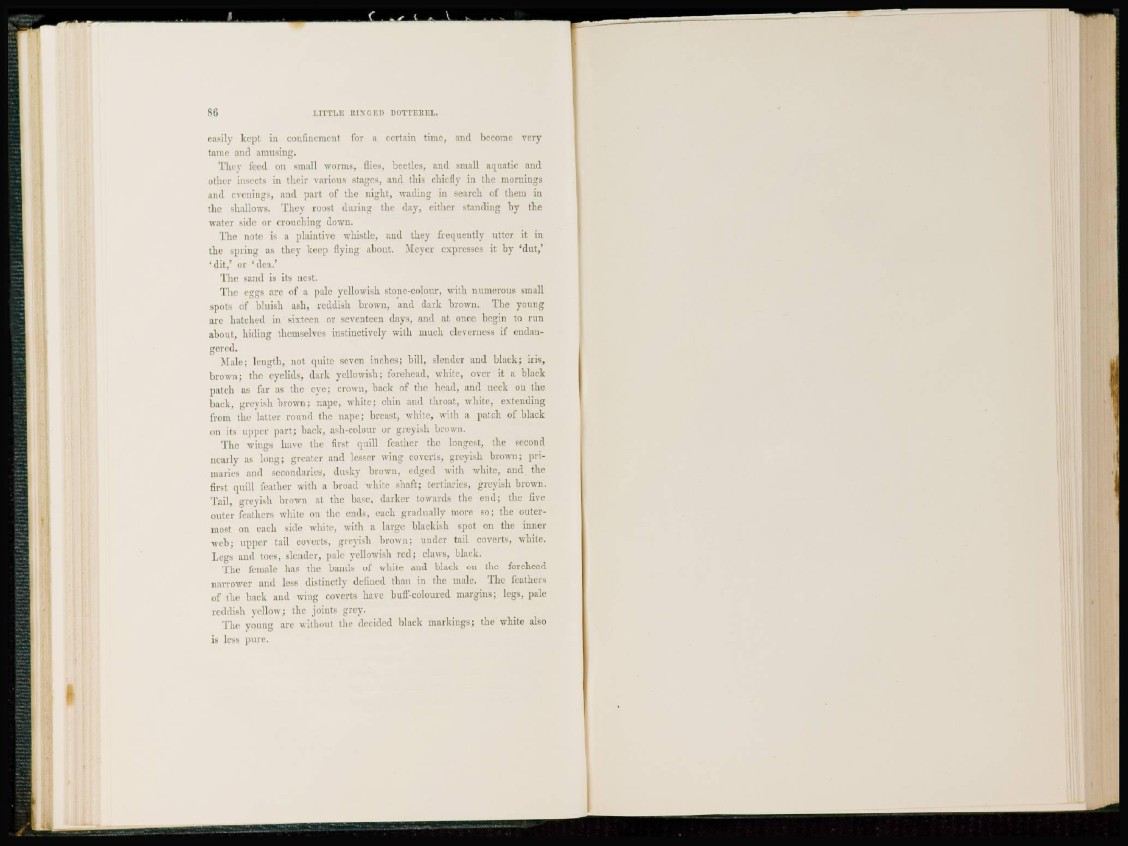
LITTLE RINGED DOTTEREL.
easily kept in confinement for a certain time, and become very
tamo and amusing.
T i n y feed on small worms, flies, beetles, and small aquatic and
other insects in their various stages, and this chiefly in the mornings
and evenings, and part of the night, wading in search of them in
the shallows. They roost daring the day, either standing by the
water side or crouching down.
The note is a plaintive whistle, and they frequently utter it in
the spring as they keep flying about. Meyer expresses it by 'dut,'
*dit,' or 'dea.1
The sand is its nest.
The eggs are of a pale yellowish stone-colour, with numerous small
spots of bluish ash, reddish brown, and dark brown. The young
are hatched in sixteen or seventeen days, and at once begin to run
about, hiding themselves instinctively with much cleverness if endangered.
Male; length, not quite seven inches; bill, slender and black; iris,
brown; the eyelids, dark yellowish; forehead, white, over it a black
patch as far as the eye; crown, back of the head, and neck on the
back, greyish brown; nape, white; chin and throat, white, extending
from the latter round the nape; breast, white, with a patch of black
on its upper part; hack, ash-colour or greyish brown.
The wings have the first quill feather the longest, the second
nearly as long; greater and lesser wing coverts, greyish brown; primaries
and secondaries, dusky brown, edged with white, and the
first quill feather with a broad white shaft; tertiaries, greyish brown.
Tail, greyish brown at the base, darker towards the end; the five
outer feathers white on the ends, each gradually more so; the outermost
on each side wdiite, with a large blackish spot on the inner
web; upper tail coverts, greyish brown; under tail coverts, wdiite.
Legs and toes, slender, pale yellowish red; claws, black.
The female has the bands of white and black on the forehead
narrower and less distinctly defined than in the male. The feathers
of (he back and wing coverts have buif-coloured margins; legs, pale
reddish yellow; the joints grey.
The young are without the decided black markings; the white also
is less pure.